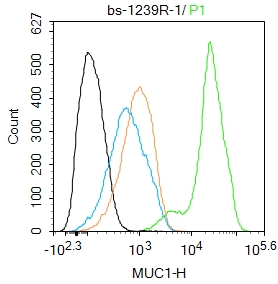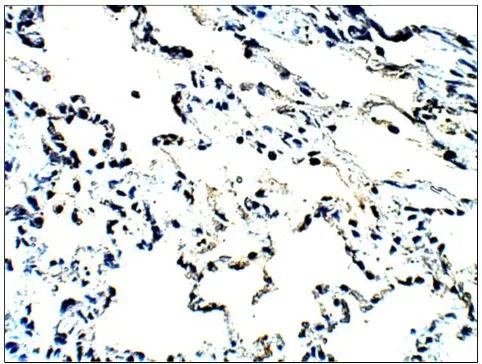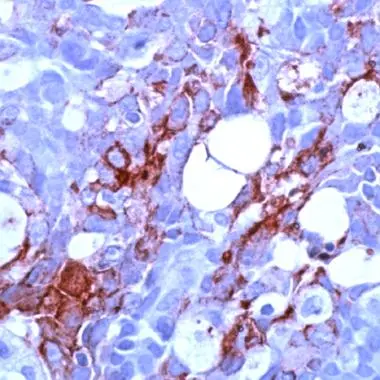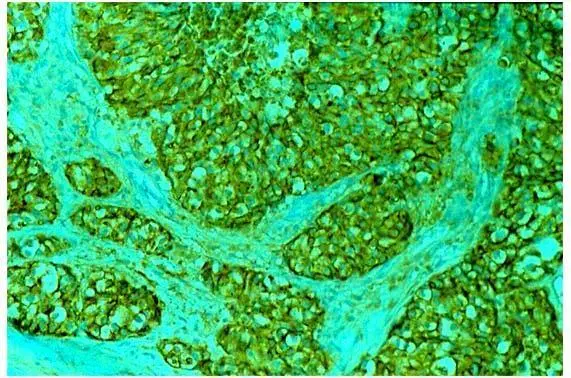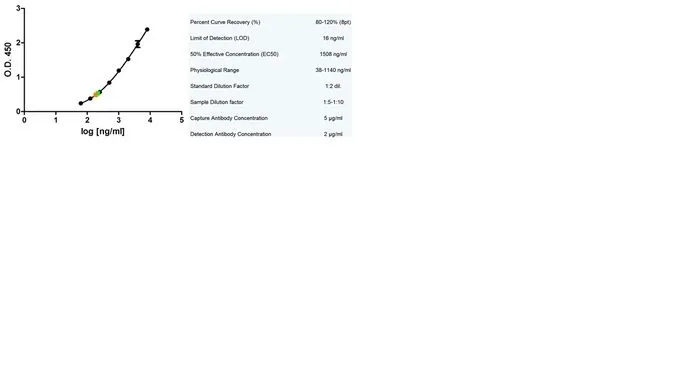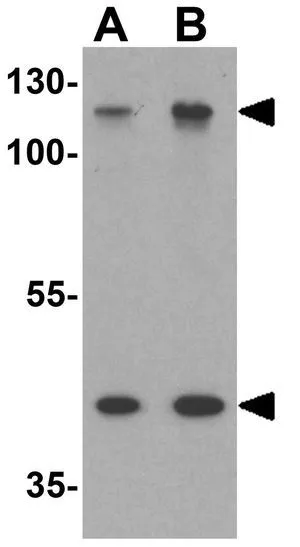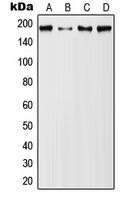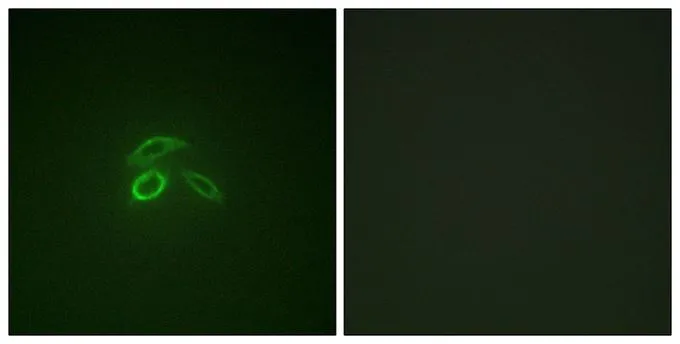![IHC-P analysis of human stomach cancer (Adenocarcinoma Grade I) using GTX57210 MUC1 antibody [014E]. Antigen retrieval : Heat-induced epitope retrieval method (pH6.0 / 30min) Dilution : 1:2500 IHC-P analysis of human stomach cancer (Adenocarcinoma Grade I) using GTX57210 MUC1 antibody [014E]. Antigen retrieval : Heat-induced epitope retrieval method (pH6.0 / 30min) Dilution : 1:2500](https://www.genetex.com/upload/website/prouct_img/normal/GTX57210/GTX57210_IHC-P_1_w_23061123_792.webp)
IHC-P analysis of human stomach cancer (Adenocarcinoma Grade I) using GTX57210 MUC1 antibody [014E]. Antigen retrieval : Heat-induced epitope retrieval method (pH6.0 / 30min) Dilution : 1:2500
MUC1 antibody [014E]
GTX57210
ApplicationsWestern Blot, ImmunoHistoChemistry, ImmunoHistoChemistry Paraffin
Product group Antibodies
TargetMUC1
Overview
- SupplierGeneTex
- Product NameMUC1 antibody [014E]
- Delivery Days Customer9
- Application Supplier NoteWB: 1:2,500 - 1:5,000. IHC-P: 1:2,500 - 1:5,000. *Optimal dilutions/concentrations should be determined by the researcher.Not tested in other applications.
- ApplicationsWestern Blot, ImmunoHistoChemistry, ImmunoHistoChemistry Paraffin
- CertificationResearch Use Only
- ClonalityMonoclonal
- Clone ID014E
- ConjugateUnconjugated
- Gene ID4582
- Target nameMUC1
- Target descriptionmucin 1, cell surface associated
- Target synonymsADMCKD, ADMCKD1, ADTKD2, CA 15-3, CD227, Ca15-3, EMA, H23AG, KL-6, MAM6, MCD, MCKD, MCKD1, MUC-1, MUC-1/SEC, MUC-1/X, MUC1/ZD, PEM, PEMT, PUM, mucin-1, H23 antigen, breast carcinoma-associated antigen DF3, cancer antigen 15-3, carcinoma-associated mucin, episialin, krebs von den Lungen-6, mucin 1, transmembrane, peanut-reactive urinary mucin, polymorphic epithelial mucin, tumor associated epithelial mucin, tumor-associated epithelial membrane antigen
- HostMouse
- IsotypeIgG1
- Scientific DescriptionThis gene is a member of the mucin family and encodes a membrane bound, glycosylated phosphoprotein. The protein is anchored to the apical surface of many epithelia by a transmembrane domain, with the degree of glycosylation varying with cell type. It also includes a 20 aa variable number tandem repeat (VNTR) domain, with the number of repeats varying from 20 to 120 in different individuals. The protein serves a protective function by binding to pathogens and also functions in a cell signaling capacity. Overexpression, aberrant intracellular localization, and changes in glycosylation of this protein have been associated with carcinomas. Multiple alternatively spliced transcript variants that encode different isoforms of this gene have been reported, but the full-length nature of only some has been determined. [provided by RefSeq]
- Storage Instruction-20°C or -80°C,2°C to 8°C
- UNSPSC12352203

![WB analysis of various samples using GTX57210 MUC1 antibody [014E]. Capan-1 cell lysate: MUC1 positive HEK293 cell lysate: MUC1 negative Loading : 5ug per lane Dilution : 1:2500 WB analysis of various samples using GTX57210 MUC1 antibody [014E]. Capan-1 cell lysate: MUC1 positive HEK293 cell lysate: MUC1 negative Loading : 5ug per lane Dilution : 1:2500](https://www.genetex.com/upload/website/prouct_img/normal/GTX57210/GTX57210_WB_1_w_23061123_219.webp)

